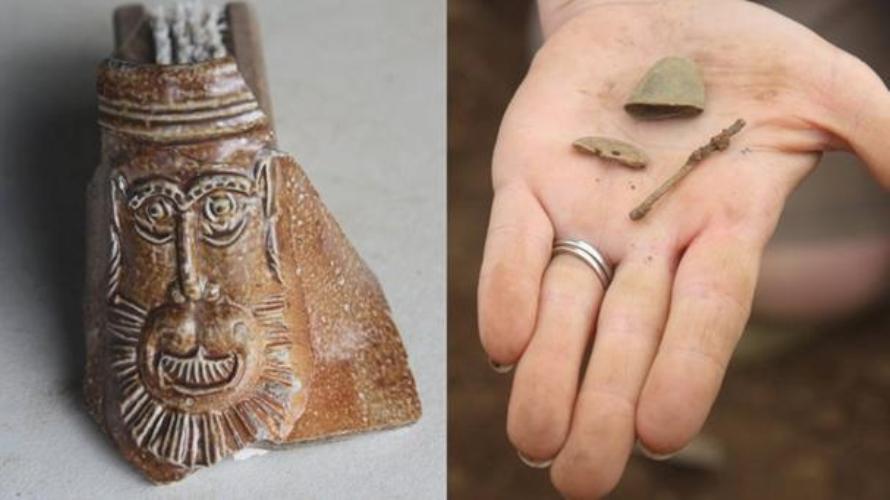Treasures Revealed During hunt For a House
In a field next to the famous apple tree which inspired Sir Isaac Newton to discover some of his greatest scientific advances, is his mother’s house.
Five years ago the National Trust acquired the field next to Woolsthorpe Manor where evidence indicated the house of Hannah once stood. A sketch from 1797 by JC Barrow showed the house, and survey work over recent years unearthed more evidence to justify a proper dig.
To help Trust archaeologists explore the site, the dig was opened up for families to come along and join in as part of the Festival of Archaeology. Different sessions included digging, cleaning finds and an artefact ID quiz.
National Trust archaeologists were helped by a team from York Archaeology for the excavations to find the house over the ten days of digging.
National Trust Archaeologists were searching for the exact location of the house. They found some rubble from its demolition and some objects that might have been in the house when the Newton family was living there.
The objects found included:
Decorative Staffordshire slip tableware
Other pottery pieces
A fragment of a 17th century bellarmine jug showing the full face of a bearded man cast into the pottery
A 17th century ‘jetton’, used as gaming tokens
Three thimbles - two adult and one child sized
Part of a needle
Some buttons.
Animal bones that were found showed signs of being butchered for meals at the house.
Once cleaned and prepared, some of the finds will go on display at Woolsthorpe Manor next year, in a display about the lost house.
About Sir Isaac Newton:
Isaac Newton was born at Woolsthorpe Manor in Lincolnshire but his father died just three months before he was born. His mother, Hannah Newton, later moved away marrying a vicar, leaving Isaac to be raised by his grandparents at Woolsthorpe Manor.
After her second husband died in 1653, Hannah had a house built for her next door to Woolsthorpe Manor and moved in with her three children from her second marriage. Isaac who was 10 years old at that time, continued to live at Woolsthorpe Manor with his grandparents.
Hannah Newton’s house was believed to have been demolished following a fire in the early 1800s.
Some of Isaac Newton’s greatest discoveries happened at Woolsthorpe Manor when, in 1665, the plague sent him back from a closed Cambridge University to his birthplace.
During 18 months of working in solitude Newton laid the foundations of much of science today, including describing laws of motion and gravitation and discovering that light was actually made up of a rainbow of colours.


